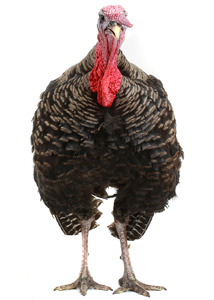November 2018
THIS MONTH: |
|
|
November 11th
Veterans Day |
|
|
November 22nd
Thanksgiving |
|
|
November 23rd
Black Friday (shopping deals day) |
|
|
November 26th
Cyber Monday (online deals day) |
|
|
November 27th
#GivingTuesday(charitable giving day) |
|
|
Reminder
Conduct year-end tax and financial planning |
|
It’s November and the holiday season is upon us. With the end of the year less than two months away, now is the time to run down your annual year-end checklist. Before you dig in to some turkey and stuffing, check out the 5 Annual Tax Essentials article for some year-end tips you can use every year. Also included in this issue is an article on banking trends and some turkey trivia you can use to impress your friends.
In This Issue:
5 Annual Tax Essentials
The more things change the more they stay the same. This is especially true when it comes to reviewing your tax situation. Mark your calendar to review these essential items each year to ensure you are not missing something that could cause tax trouble when you file your tax return:

- Required minimum distributions
If you are 70½ or older, you may need to take required minimum distributions (RMDs) from your retirement accounts. RMDs need to be completed by Dec. 31 every year after you turn the required age. Don’t forget to make all RMDs because the fines are extremely hefty if you don’t – 50 percent of the amount you should have withdrawn. - Your IRS PIN
If you are a victim of IRS identity theft you will be mailed a one-time use personal identification number (PIN) as added security. You can expect to receive your PIN in the mail sometime in December. Save the PIN as it is required to file your Form 1040. If you would like to sign up for the PIN program, you can do so on the IRS website. Note that once you are enrolled in the program, there is no opt out. A PIN will be required for all future filings with the IRS. - Retirement Contributions
You may wish to make some last-minute contributions to qualified retirement accounts like an IRA. This can be $5,500 for traditional or Roth IRAs plus an additional $1,000 if you are 50 or older. Contributions to traditional IRAs need to happen by April 15, 2019 to be deducted on your 2018 tax return. - Harvest Gains and Losses
Profits and losses on investments have their own tax rates from 0 percent to as high as 37 percent. Knowing this, make plans to conduct an annual tax review of investment moves you wish to make. This includes:- Understanding investments held longer than one year have lower tax rates as long-term capital gains.
- Trying to net ordinary income tax investment sales with long-term investment losses.
- Making full use of the annual $3,000 loss limit on investment sales
Timing matters with investment sales and income taxes, so having a year-end strategy can help lower your tax bill.
- Last-Minute Tax Moves
While your last-minute tax move opportunities may be limited, here are a few ideas worth considering:- Make donations to your favorite charities to maximize your itemized deductions.
- Consider contributions of up to $100,000 from retirement accounts to qualified charities if you are older than 70½.
- Make tax efficient withdrawals from retirement accounts if you are over 59½.
- Delay receipt of income or accelerate expenses if you are a small business.
- Take advantage of the annual $15,000 gift-giving limit.
Understanding your current situation and having a plan will make for a smooth tax filing process and maximize your tax savings.
How to Survive 3 Unavoidable Banking Trends
Smartphones and other technological advances enable banks to create products and services that dramatically change the way you bank. Here is a primer on three of the biggest banking trends and tips to protect your money:

- The traditional bank branch is going away. A recent report from consultants McKinsey & Company claims an average of three bank branches are closing every day. Many of the branches that remain open are either closing their lobby or drive-through lanes. Branches don’t appear to be going away completely, however, as 80 percent of Americans still prefer human interaction, according to the same McKinsey & Company report. What is likely to change is the manner in which the banker and customer interact. Banking agents roaming branches with tablets (rather than meeting customers at a desk) and teller-less, video-operated bank pods are on the horizon.Tip: When choosing a bank, understand how it wishes to do business with you. Some will install financial barriers if you want to have a traditional banking relationship. This includes charging you for making deposits, refusing to accept mail deposits, refusing to take coins, charging fees for check writing and other hidden fees.
- Mobile deposits are becoming more popular. Most banks offer a deposit option that allows you to take a picture of a check on your phone and upload it to the bank’s system to be deposited. According to Bank of America CEO Brian Moynihan, more customers now deposit checks on their mobile phones than in branches. Mobile deposits are extremely convenient, but they have their own set of rules to follow, including endorsements, deposit limits, posting timing and record retention.Tip: Understand all the factors before using your phone to deposit a check. Also, read the terms of use before using remote deposit applications. Remember, you are creating a digital link between your phone and your personal banking information.
- Mobile wallets are replacing physical wallets. Mobile wallets like PayPal, Apple Pay and Zelle give users a convenient way to pay online, pay friends directly and even make payments in stores. According to Apple Pay VP Jennifer Bailey, Apple Pay is accepted at 50 percent of all retail stores. Each mobile wallet operates a little differently, but the goal is to get users to ditch traditional payment methods and get them on their platform. For the most part, all you need is a bank account and the provider’s mobile app and you can start making payments. In addition to convenience, the idea is that new encryption and biometric technologies (like fingerprints and face recognition) give more protection than traditional credit card transactions.Tip: If you are looking to use a mobile wallet, compare the services to see which one would work best for you. Pay special attention to any consumer complaints and problems others are having with your service of interest.
Even with so many changes and countless options available to you, the point remains that it’s your money and you control where to put it. Do the research, talk to friends about banks they use, and ask questions before deciding who to trust with your money.
Turkey Trivia
 With Thanksgiving right around the corner, here is a quiz to test your turkey knowledge and provide some facts you can use to stump your friends and family:
With Thanksgiving right around the corner, here is a quiz to test your turkey knowledge and provide some facts you can use to stump your friends and family:
- Where do wild turkeys sleep?
- In trees
- On the ground in brush or tall grass
- In burrows
- On large rocks
- a. In trees. Turkeys spend their nights sleeping in trees mostly for protection from predators. The only exception is when female hens risk danger to stay with their eggs on the ground during the roughly 28 day incubation period.
- How far away can a turkey see movement?
- 20 feet
- 50 feet
- 50 yards
- 100 yards
- d. 100 yards. Turkeys have excellent vision — maybe three or four times better than humans. Because their eyes are on the sides of their head, they have periscope vision and can see 360 degrees with the simple twist of their neck.
- Which U.S. president was the first to offer an official pardon to a Thanksgiving turkey?
- Abraham Lincoln
- Harry Truman
- John F. Kennedy
- George H.W. Bush
- d. George H.W. Bush. While there were informal pardons and stories about turkeys spared by U.S. Presidents dating back to Abraham Lincoln, the White House records show the first official pardon was granted by George H.W. Bush in 1989.
- What is the specific name for a baby turkey?
- Chick
- Poult
- Peep
- Cygnet
- b. Poult. Once a poult frees itself from the egg, it can start following its mother hen away from the nest within 12-24 hours.
- Approximately how many turkeys are consumed each year at Thanksgiving?
- 19 million
- 33 million
- 46 million
- 62 million
- c. 46 million. According to the National Turkey Federation, Thanksgiving turkeys account for 18 percent of all turkeys raised on American farms this year.
Now you are in the know about some of the unique habits of our popular holiday centerpiece. Enjoy your Thanksgiving!





